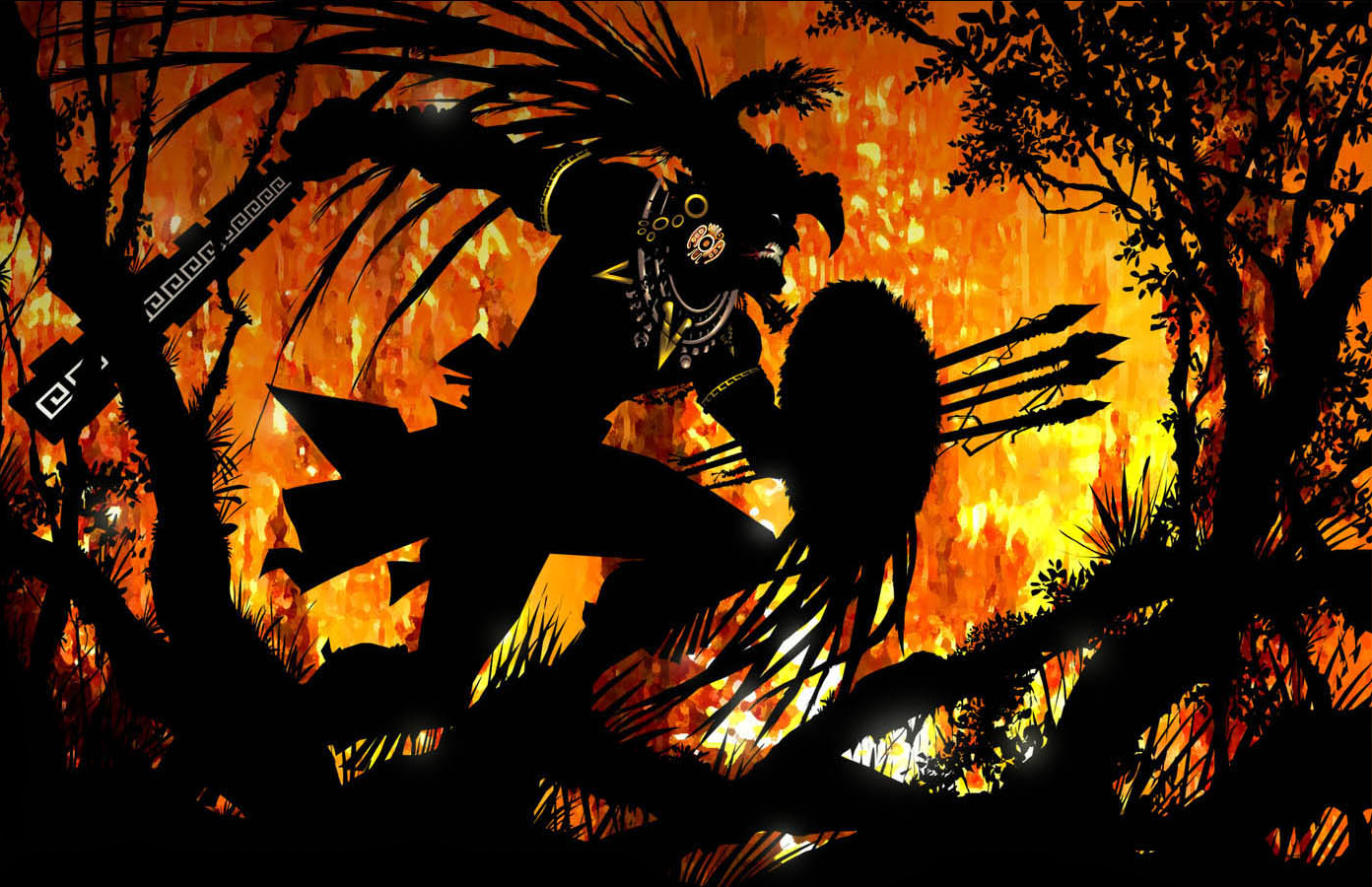Yaomachtia
by hughpierre
Yaomachtia is a fighting style using non-lethal maneuvers and techniques to disable opponents.
Execution
Postures
Tall
The tall posture is a nearly free-standing pose with little bending at the knees meant to intimidate the opponent with their size.Crouched
The crouched posture has many variations for easier movement. It lowers the combatant's center of gravity in preparation for an attack.Rear Leg
The rear posture is a common stance where one leg is flung way back with the other front leg baring most of the body's weight. This stance also offers a smaller target to attack because how much more it bends the knees than the other techniques.Holds
There are three main positions on which to hold the maquahuitl:Choked
The choke hold involves holding the hilt as close to the obsidian blades as possible.Middle
The middle hold is the most common grip. The hilt is held at the midpoint.Long
The long hold is held the furthest from the blades to extend the warrior's reach and momentum.Grips
The different grips describe the pressures the finger and palm put onto weapons. The grips are used in tandem with the holds.Strong
The strong grip, commonly called the "hammer grip", is simply the even and comfortable strength people would normally hold onto their weapon.Weak
The weak grip is where the pinky and ring finger grip the hilt tightly; and the thumb, middle and index fingers loosely hold onto the sword to make it easier to change between holds. This grip typically allows for faster sneak swings.Leverage
The leverage grip has the thumb, index and middle fingers holding on tight while the other are loose to make changing between holds easier. Because of the natural leverage, this grip allows for straight forward fast and strong swings when the hand is pulled into a fist.Techniques
Charge attack
This technique utilizes the "Rear Leg" stance that the fighter takes before sprinting towards the enemy and initiating combat.Thumb grips
This technique rotates around the positioning of the thumb for ease of adjusting the sword position.Wrapped Thumb is affixing the grip onto the hold.
Thumb Up is resting the thumb parallel to the hilt so it is easier to reposition or twirl the weapon.
Swapping between Grips
This tactic involves possess many combinations but the most used ones start with the weak grip and trying a combination of succeeding grips to disorient the opponent or as a means of getting into a better position.Rapid Extension
This is a technique where the warrior changes from the "choke hold" to a "long hold" to extend a their measure mid fight. It is a common tactic taught to recruits who would normally hold the end of the hilt pointing towards their opponent and the blade point away from them and over their shoulder. While all the enemy can see the end of the hilt, the recruit would subtlety slide from the choke hold to the long hold.Components and tools
Maquahuitl Sword
The standard armament of the elite cadres; composed of a wooden sword with sharp obsidian blades embedded into groves that run the length of the wooden holder and held in place by a plant resin adhesive. Maquahuitls can be used to cut, but for use with the Yaotl style, it is more accustomed as a bludgeoning weapon:Sword Tip
The very tip of the maquahuitl is rounded to jab at the enemy's head to knock them out.Sword Face
The flat sides of the maquahuitl can break bones when swung in a wide arc. The amount of room needed to perform this type of sweep would lead to elite warriors squaring off in one-on-one duels, instead of fighting in groups.Sword Edge
While the most dangerous part of the maquahuitl, being struck edgewise is not necessarily a debilitating blow. Though the target is more likely to bleed out from such wounds.Chimalli Shield and Armour
Dragon Feathers have been plucked from dragons as the best protection the valley provides. They are incredibly resilient, flexible and resistant to cutting.
It is for this reason that a way of fighting would eventually develop into Yaomachtia. As opponents stood little chance of hacking their way through feather shields and feather armour; they eventually realized that wearers were still susceptible to piercing and bludgeoning attacks.
Ropes, Nets and Boas
Not-as-loved alternatives to the maquahuitl as they could disable opponents from a distance. These weapons, made from fibers, carry less glory than fighting close quarters. Although, several veterans in many military orders can be seen using them quiet deftly.Observance
Flower Wars
The point of the Flower Wars is to bring back hostages to a temple to be sacrificed. Yaomachtia is a fighting style that evolved to specifically address this need.
Primary Related Location
Aggressive Techniques
To kill your enemy on the battlefield is a sign of great clumsiness.




Comments